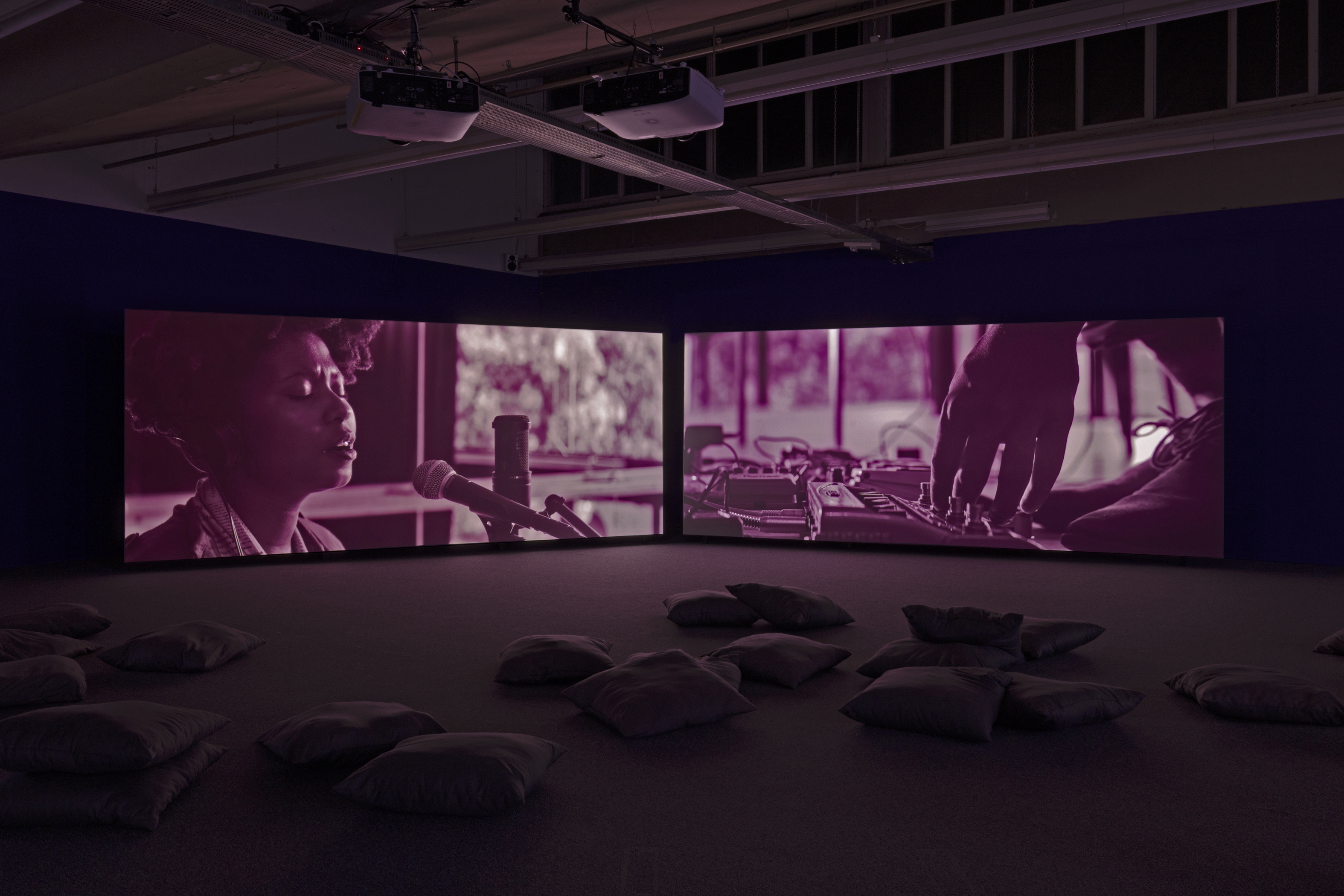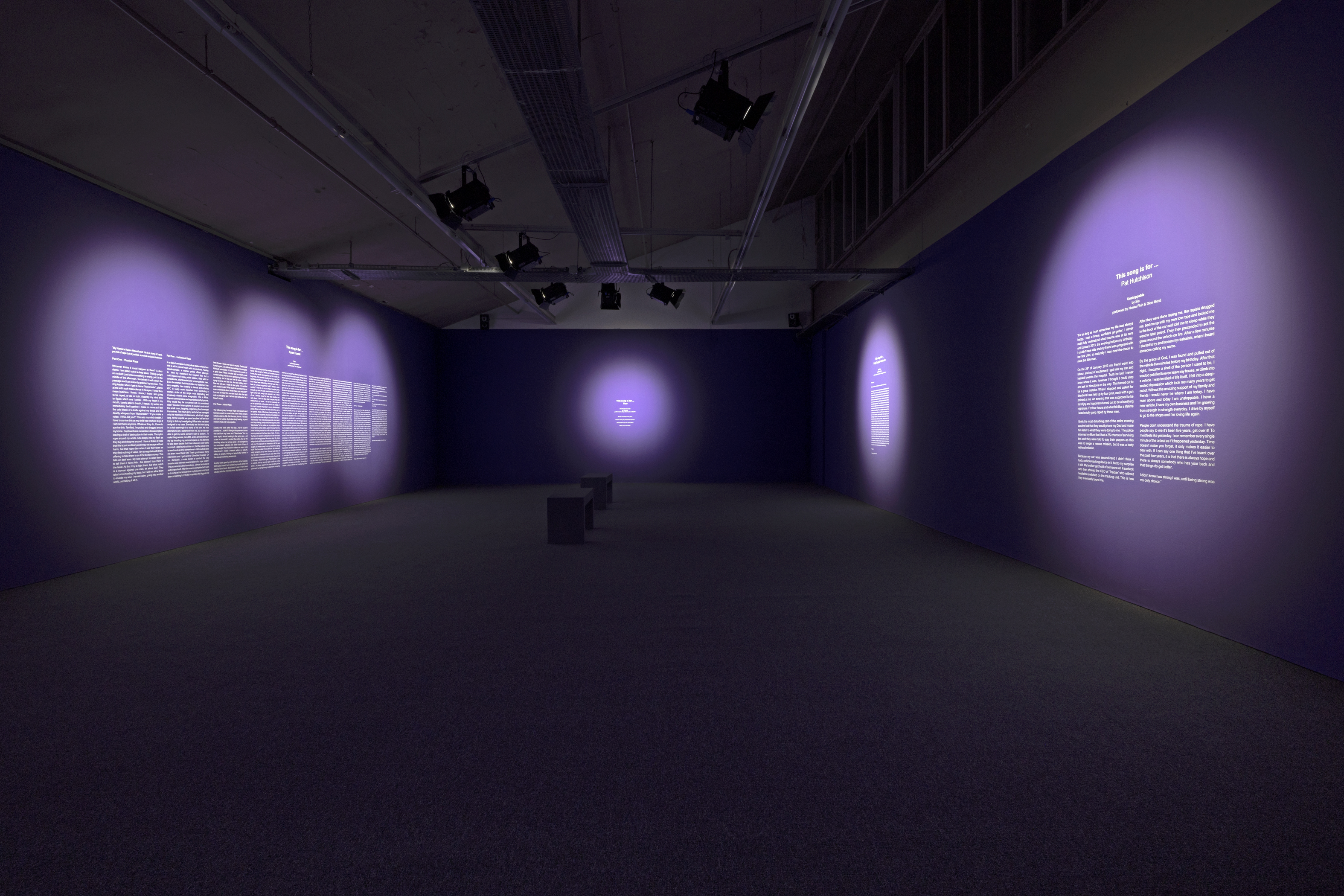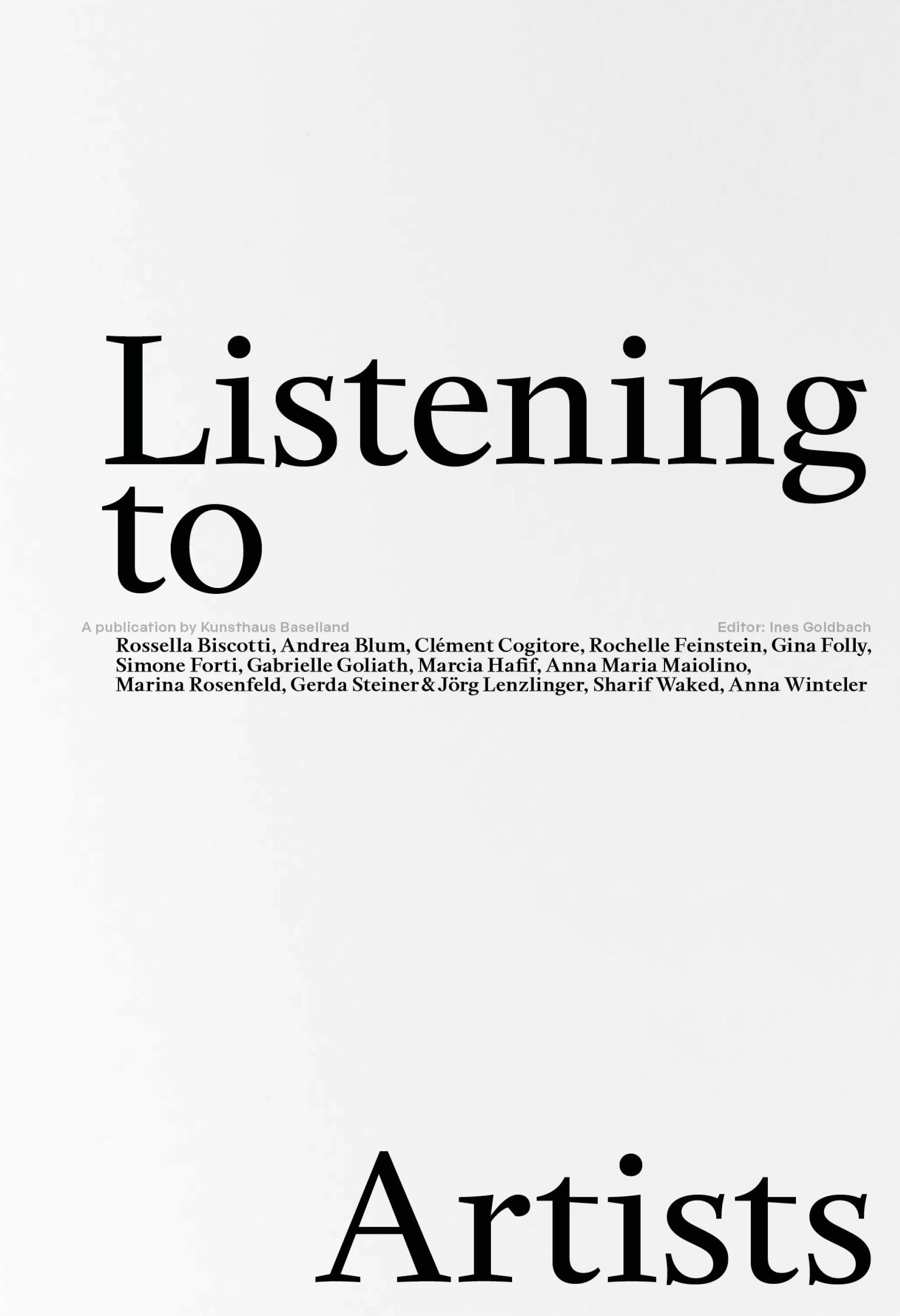Gabrielle Goliath
This song is for ...
13.5. —
17.7.2022






Selected press coverage
Project partners





Bosshard + Co. AG
Gabrielle Goliath locates her multidisciplinary art practice within the histories and everyday experiences of black, brown, femme and queer life, and in response to the conditions of precarity and violence that continue to shape post-colonial and post-apartheid social conditions.
The artist, who lives and works in Johannesburg and also teaches at the University of the Witwatersrand, has for a number of years devoted herself to what she describes as the political labour and „life-work of mourning“ – in which, “to imagine and seek to realise the world otherwise is to bear with us those lost to or still surviving an order of violence we hope to and must transform”.
The immersive environments of Goliath’s practice draw visitors into a participative space of possibility – of poetry and beauty, despite the difficult thematics explored in her work. On this note of beauty she cites leading black feminist scholar Saidiya Hartman, for whom, „beauty is not a luxury, but a means of creating possibilities under limited circumstances...“. This politics (rather than ideal) of beauty underlies Goliath‘s performances, video installations, photo series and published texts, all of which encourage empathic, potentially transformative encounters.
Goliath gained international recognition with her groundbreaking installation This song is for ... which debuted in Kyiv in 2019, following years of research, encounters, interviews and collaborations. Since then, the work has travelled widely, initiating discussions in diverse sociopolitical contexts. For this complex two-channel video installation, Goliath asked survivors of rape to share with her a song of deep and personal significance, whether related to their experience of trauma or their journey of healing. These songs were subsequently re-performed by a collaborating group of women and gender-queer led musical ensembles. In this moving piece, which will now be shown in Switzerland for the first time, the dedication songs and shared testimonies of the ten survivors speak to the global severity of sexual violence, and powerfully reaffirm claims to life, love and hope in the wake of unspeakable violence.
For Goliath, This song is for … asks for something more than the passive remove of witness, drawing participants into a complicit, entangled aesthetic encounter. As she says, “I sense this possibility in a work like This song is for …, in the kind of involved encounters the work asks for—as people relate across difference, across the incommensurability of another’s suffering, and participate in the urgent, difficult, but I believe transformative working of this beauty in-spite-of”.
In addition to the installation, Goliath’s newly extended photographic series, Berenice, will premiere at Kunsthaus Baselland. This ongoing series of commemorative portraits marks the absent presence of Berenice, a childhood friend of the artist’s who was killed in an incident of domestic violence. In Berenice 10-28, nineteen brown women ‘stand in’ as surrogates for Berenice, each one marking a year unlived, from the year of Berenice’s death in 1991 to that of the series’ completion in 2010. Goliath has since decided to revisit the series, reanimating its commemorative gesture in eleven new portraits. Whilst holding to some of the formal qualities of the first series, Berenice 29-39 (2022) introduces differences as well, tracing what she describes as the “life work of mourning”. Berenice is a cornerstone of the artist’s practice, marking for her a certain ethical turn towards a community-driven politics of care.
Goliath’s work not only confronts us with the violent fractures of human coexistence, but also with the possibility of survival, and the difficult but enabling conditions of hope and community. This is the in-spite-of, the otherwise of her practice, reminding us of the mutual bearing we share, and the possibility of finding even within conditions of normative violence the possibility of imagining and realising the world differently. (Ines Goldbach)
Substantiated by an exceptional exhibition history, Goliath has presented immersive installations worldwide and has also been the recipient of several prestigious art prizes including a Future Generation Art Prize/Special Prize (2019), the Standard Bank Young Artist Award (2019), as well as the Institut Français, Afrique en Créations prize at the Bamako Biennale (2017).
